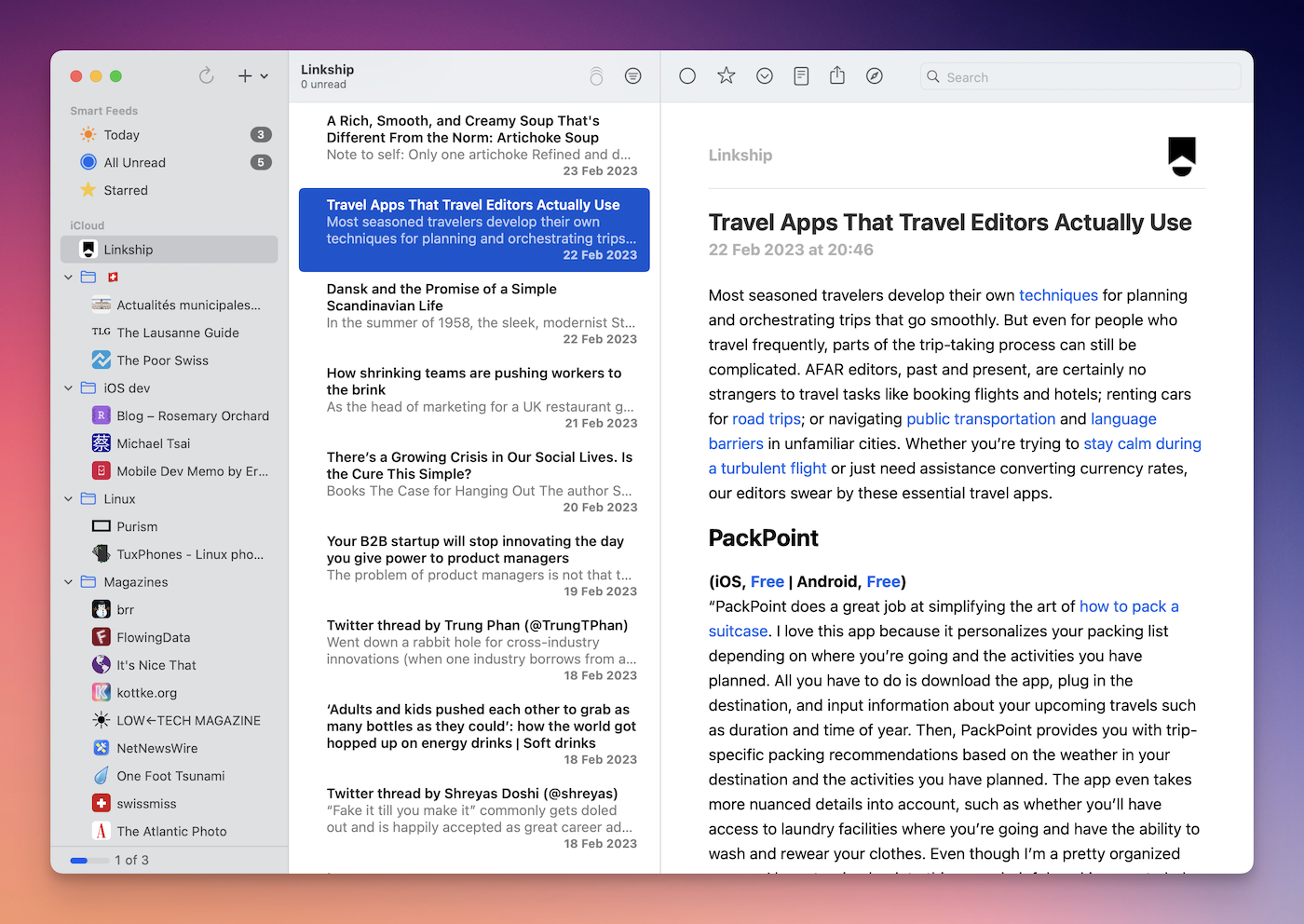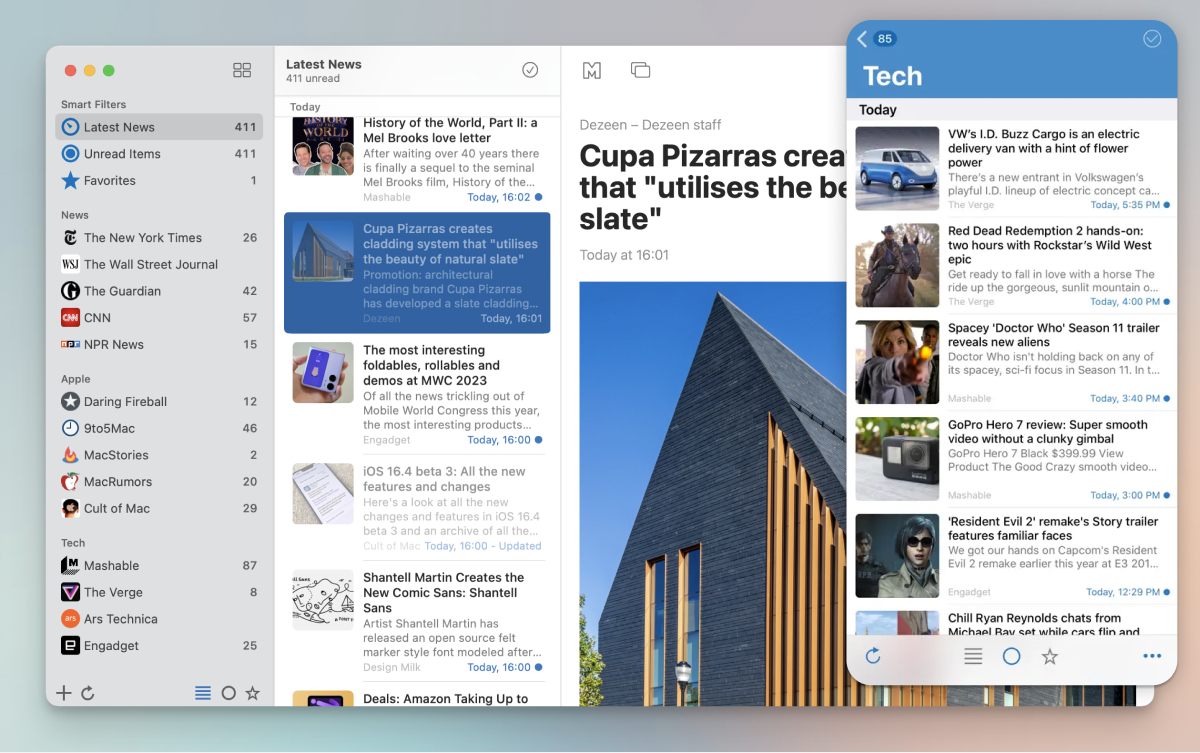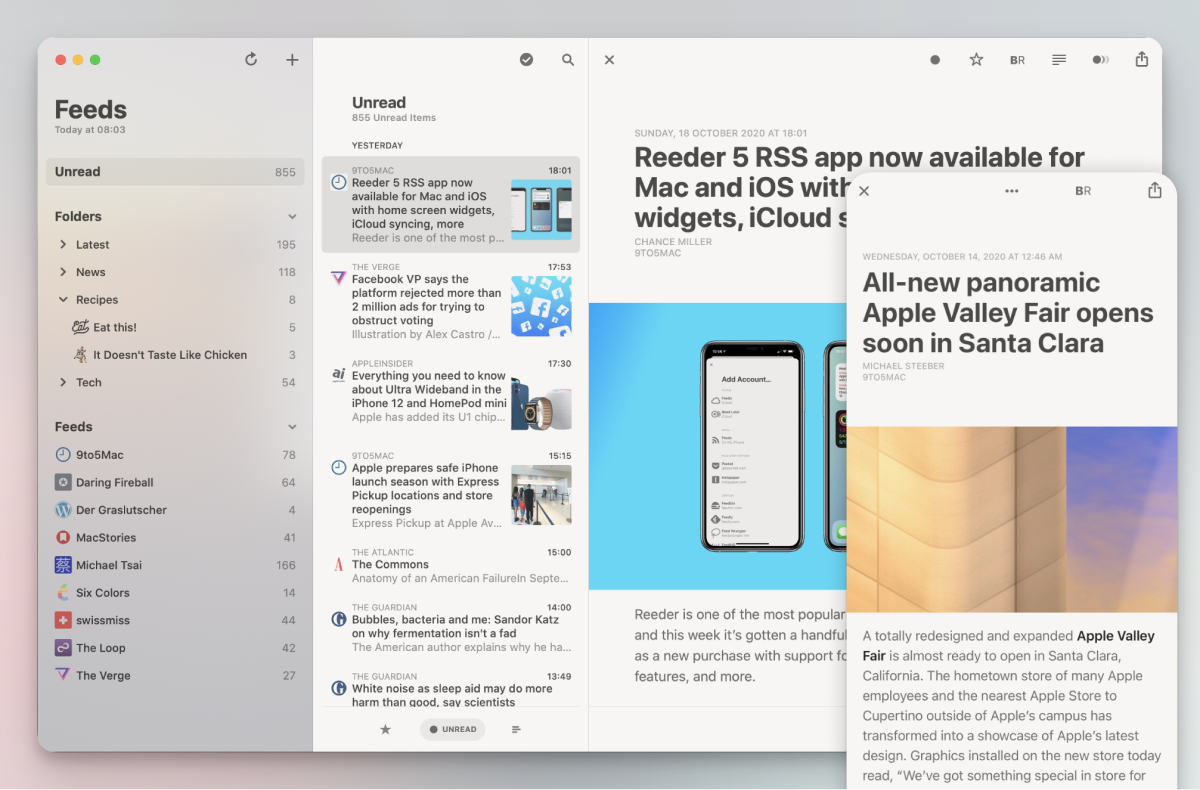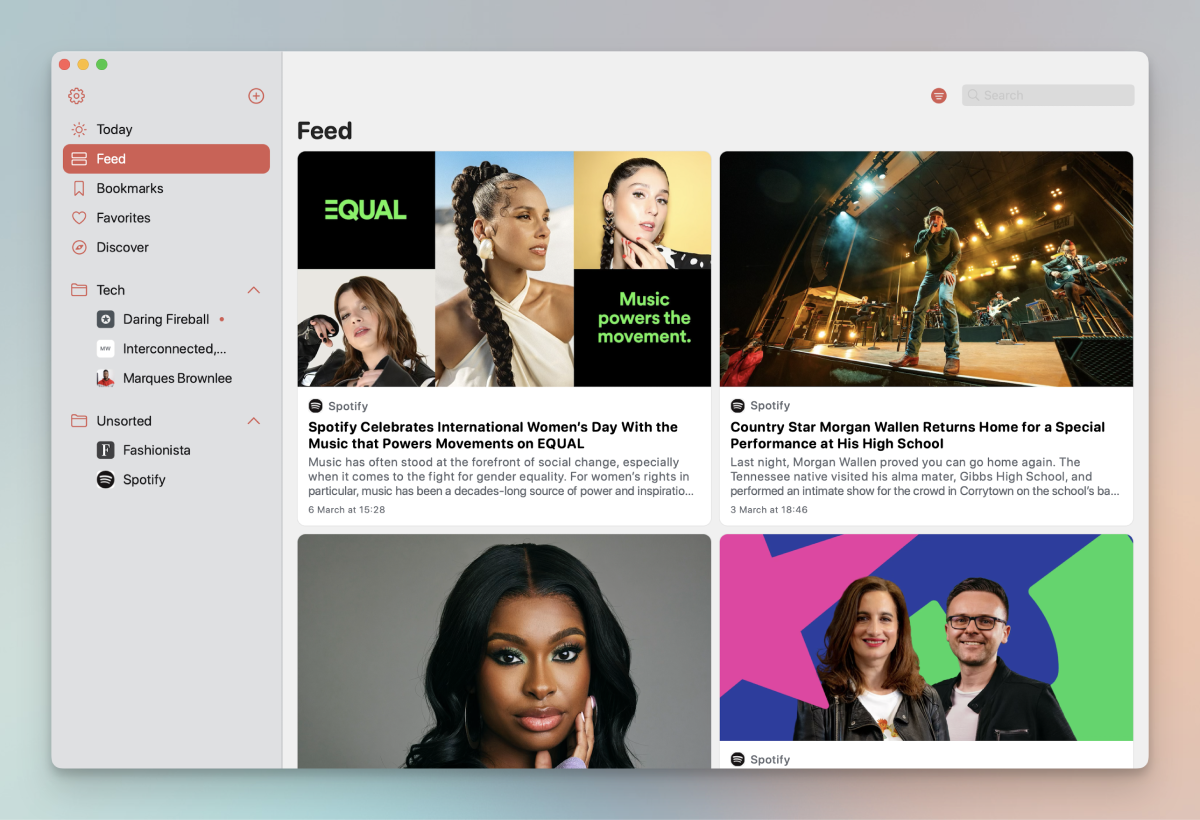Best RSS readers for macOS and iOS in 2023
Regardless if you're just getting into RSS or you're a long-time user, we've reviewed and compiled a list of best RSS feed readers for your Apple devices.
What's an RSS reader?
RSS readers (sometimes called aggregators) are apps that allow users to subscribe to updates from different websites using RSS feeds. An RSS reader typically displays a list of latest articles and lets you read them without opening the website in a web browser.
In this review we've taken a closer look at native RSS readers that are available across Apple's platforms. Here are the main things we looked at:
- Is the app available on macOS, iOS and iPadOS (a must)
- How well is the app integrated with Apple's ecosystem, such as is it built using Apple's SDKs, does it offer widgets, etc. (a must)
- What are the organizational options the app offers, such as folders, tagging or search
- Does the app support sources other than RSS (for example Reddit or Twitter)
- Which RSS syncing services does it support
- What kind of reading experiences does the app provide? Is there a built-in option for fetching full articles or offline support
While there is a thriving amount of RSS readers available on the App Store, each with its own unique take on RSS, we've shortlisted 4 apps presented below.
Can I use Linkship with other RSS readers?
Linkship provides you with an RSS feed for your read-it-laters. As RSS is an open standard, all of the RSS readers work with Linkship out of the box.
Go-to-choice: NetNewsWire
Over the past two decades, NetNewsWire, first released in May 2002, has established itself as the go-to-choice for many casual and not-so-casual readers still in 2023.

Amongst all of the reviewed apps, it offers a most succinct, intuitive interface that just works out-of-the box with patterns familiar to Mac and iOS users. NetNewsWire allows you to organize your feeds in folders or use one of three predefined views (Today, All Unread and Starred) for an at-a-glance view.
By default NNW displays article text that's included in the RSS feed which works well for most feeds, however for those sites that contain just a few short words you can instruct NNW to fetch the full article.
Other than RSS feeds, NetNewsWire has a built in Twitter and Reddit integrations which allow you to easily to subscribe to different #searches, or subreddits. Note that Twitter integration may be leaving this Open Source app if access to Twitter's API eventually does get put behind a paywall.
NetNewsWire 6
Free and Open Source
Pros:
- Reliable and predictable design
Cons:
- Reader view options are limited, but customizable via custom HTML and CSS themes
For the pros: News Explorer
News Explorer is easily the most configurable reader that takes RSS to places it has not been yet: Apple TV and Apple Watch.

While other RSS readers focus on simplicity, News Explorer goes all in on customization, here's a quick sample of unique settings we found in News Explorer:
- Full-text extraction algorithm (Mercury or Readability)
- Position and size of thumbnails (left, right, poster, none)
- Transparency of read items (0 - 100%)
- Font smoothing algorithm (subpixel, greyscale)
- Double-clicking a list item (open article in different views)
- Toggle JavaScript of the built-in web browser
...and the list goes on.
One of more interesting features in News Explorer is its slideshow mode which makes it perfect for design-oriented websites. Once you are in the slideshow mode you can swipe through images and videos embedded in an article, unfortunately you cannot advance to the next article while in the slideshow.
Despite a large number of features, New Explorer can be also a great reader for everyone that's new to RSS. Thanks to a built-in feed search engine, users can discover blogs and websites around the topics they're interested in.
News Explorer 1.11
$10 macOS app. $5 iOS/iPadOS/Apple Watch/Apple TV app. 14-day free trial available for macOS.
Pros:
- Granular control over behaviour and appearance
- Slideshow mode for graphic-heavy feeds
- Available on Apple TV and Apple Watch
Cons:
- Timeline view can be confusing to use
- Supports only iCloud sync
For bookworms: Reeder
Reeder is an excellent RSS reader for everyone who values great interaction design or needs a way to easily find articles they've read. Typical RSS readers allow you to organize your feeds into folders, but Reeder goes one step further with its tagging system for individual articles.

Reeder's tagging feature is a powerful tool that transforms the RSS reader into a lightweight bookmarking and research app. With this feature, users can easily tag articles they have read, making it easier to find and organize articles you want to revisit later.
With a focus on avid readers, Reeder offers a special reader mode called Bionic. Bionic is meant to help you read faster by drawing your eye's attention to start of each work, however this claim has been disputed in a 2022 research by Readwise.
Besides the tagging system, Reeder for iOS offers a delightful user experience. Almost every interaction with an app has a carefully designed animation or transition. Navigating between articles is just easy: simply continue scrolling past the end of your current article and the new one comes up - effortless.
Reeder 5
$10 macOS app. $5 iOS/iPadOS app.
Pros:
- Excellent interface with easy navigation
- Article tagging
Cons:
- Sold separately for iOS and macOS
Up-and-coming: Artykul
Artykul stands out as the /kul/ new RSS reader, being first released at the end of 2022. It's the ease of use and high level of polish what helped it make this list.

We especially appreciated its easy reader view customization options, as well as the Discover section that has a selection of popular feeds in various topics, help new users get started with RSS.
Artykul feels like it has the potential to become a new favourite for many users.
Artykul 1.2
Freemium. All features starting at $3/month or $30/year.
Pros:
- Thoughtful design with easy navigation
Cons:
- Can feel slow even with only a handful of feeds
- Requires an account to enable cross-device syncing
